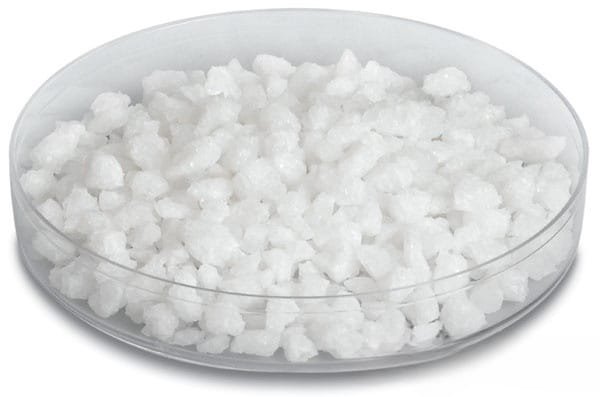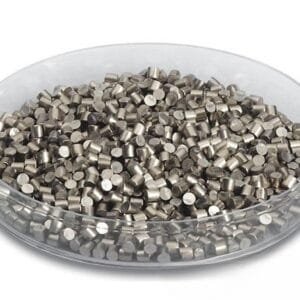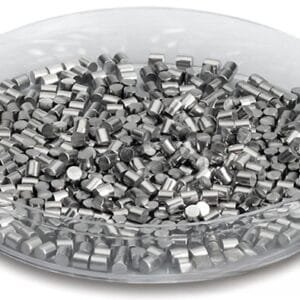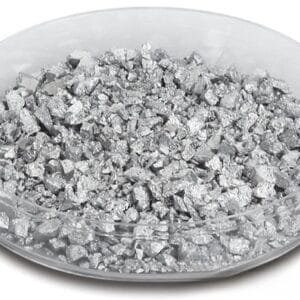High-Purity Magnesium Fluoride Evaporation Materials from TFM
Magnesium fluoride evaporation materials from TFM are fluoride ceramic materials with the chemical formula MgF2. This material appears as white or crystalline, with a high melting point of 1,261°C, a density of 3.18 g/cc, and a vapor pressure of 10⁻⁴ Torr at 1,000°C. Magnesium fluoride is primarily used in optical applications, owing to its excellent transparency across a broad range of wavelengths. High-purity MgF2 evaporation materials play a critical role in deposition processes, ensuring the production of top-quality thin films. At TFM, we specialize in producing magnesium fluoride evaporation materials with purities reaching up to 99.9995%, utilizing stringent quality control processes to guarantee product reliability and performance.
Related Products
Magnesium Fluoride Evaporation Materials Specification
| Material Type | Magnesium Fluoride |
| Symbol | MgF2 |
| Appearance/Color | White tetragonal crystals |
| Melting Point | 1,263 °C (2,305 °F; 1,536 K |
| Density | 3.148 g/cm3 |
| Purity | 99.9% |
| Shape | Powder/ Granule/ Custom-made |
Applications of Magnesium Fluoride Evaporation Materials
Magnesium fluoride evaporation materials are widely used in various deposition techniques such as semiconductor deposition, chemical vapor deposition (CVD), and physical vapor deposition (PVD). Their primary application lies in the optics industry, where they are utilized for wear protection, decorative coatings, and display technologies due to their excellent optical properties.
Packaging of Magnesium Fluoride Evaporation Materials
At TFM, all magnesium fluoride evaporation materials are carefully packaged and clearly labeled to ensure easy identification and rigorous quality control. We take every precaution to prevent potential damage during storage and transportation, ensuring the materials reach you in optimal condition.
Get in Touch
TFM is a leading manufacturer and supplier of high-purity magnesium fluoride evaporation materials. We offer these materials in various shapes, including tablets, granules, rods, and wires. Custom forms and quantities are also available upon request. In addition, TFM provides a variety of evaporation sources, such as boats, filaments, crucibles, heaters, and e-beam crucible liners. Contact us for current pricing and information on evaporation materials and other related products not listed here.
Ordering Table
| Material | Size | Quantity | Purity | Part Number |
| Magnesium Fluoride | 1mm - 2.5mm Pieces | 1 kg | 99.99% | EVMMGF-1-2.5 |
| Magnesium Fluoride | 1mm - 2.5mm Pieces | 25 g | 99.99% | EVMMGF-1-2.5A |
| Magnesium Fluoride | 1mm - 2.5mm Pieces | 50 g | 99.99% | EVMMGF-1-2.5B |
| Magnesium Fluoride | 1mm - 2.5mm Pieces | 500 g | 99.99% | EVMMGF-1-2.5T |
| Magnesium Fluoride | 1mm - 4mm Pieces | 500 g | 99.995-99.999% | EVMMGF501-4T |
| Magnesium Fluoride | 3mm - 6mm Pieces | 50 g | 99.9% | EVMMGF-1113B |
| Magnesium Fluoride | 3mm - 6mm Pieces | 100 g | 99.9% | EVMMGF-1113D |
| Magnesium Fluoride | 3mm - 6mm Pieces | 500 g | 99.9% | EVMMGF-1113T |
| Magnesium Fluoride | 3mm - 6mm Pieces | 1 kg | 99.9% | EVMMGF1113KG |


 MSDS File
MSDS File



Reviews
There are no reviews yet.